#princess catharina amalia of orange nassau
Explore tagged Tumblr posts
Text


















The Royal Fandom Autumn 2024 Photo Challenge!
Day Six: Favourite photo(s) of an heir (they have to be currently first in line to the throne)
#mine#royaltyedit#Royal Autumn 2024 Challenge#crown prince haakon#crown princess victoria#princess leonor of spain#princess elisabeth of belgium#prince jacques of monaco#princess gabriella of monaco#jordanian royal family#princess catharina amalia of orange nassau#bhutanese royal family#will
51 notes
·
View notes
Text
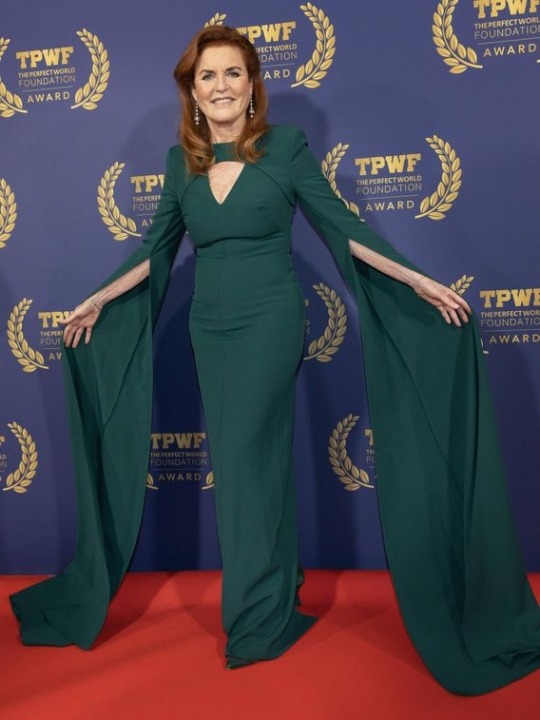

#the netherlands#princess of orange#princess catharina amalia#dutch royal family#House of Orange Nassau#uk#duchess of york#sarah ferguson#british royal family#house of windsor#who wore it best
27 notes
·
View notes
Text
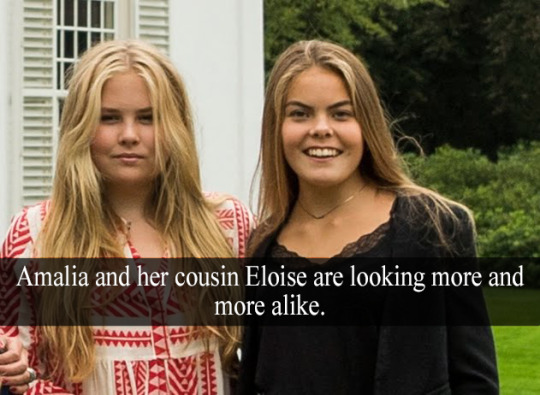
“Amalia and her cousin Eloise are looking more and more alike.” - Submitted by Anonymous
17 notes
·
View notes
Text
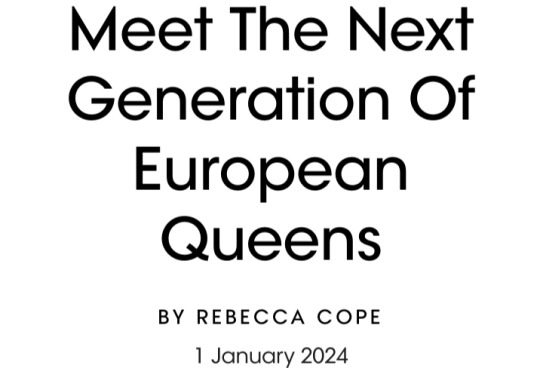

Princess Catharina-Amalia of the Netherlands
Princess Catharina-Amalia (born 7 December 2003) is the heir to the Dutch throne and is the eldest of King Willem-Alexander and Queen Maxima’s three daughters.
Unusually, the monarchy in The Netherlands has been predominantly female-led, with three Queens reigning in succession from 1890-2013, when Catharina-Amalia’s father became King, so she’s in good company historically.
Unlike her parents who have committed a handful of regrettable gaffes (including going on holiday to Greece during a Covid-19 lockdown), Catharina-Amalia seems to have her finger on the pulse of the nation.
Case in point:
She rejected her rights to a yearly royal allowance when she turned 18, ostensibly because as a student (she’s studying politics, psychology, law, and economics at the University of Amsterdam), she’s not a “working” royal but also because it felt wrong during a cost of living crisis.
Much like Prince William here, the Princess is keen to have a normal university experience and lived in shared housing with other students until she was threatened with kidnap by a criminal gang.
She also attended a public primary school and even worked in a beach bar in The Hague during her summer break.
Like many Gen Z-ers, she has spoken candidly about mental health, revealing she sometimes sees a therapist, and while making no direct comments about it, she was the focus of new legislation that means LGBTQIA+ royals would be able to marry anyone they chose without forfeiting their right to the throne.
The House of Orange is in need of good PR, as its popularity rankings have dropped in recent years, with Catharina-Amalia hopefully just the fresh face it needs.

Princess Elisabeth of Belgium
Princess Elisabeth (born 25 October 2001) will make history when she ascends to the throne as the country’s first Queen Regnant.
A decade before her birth, the primogeniture was altered to allow for female succession, and she will be the first monarch to benefit.
Had it not been changed, her younger brother, Prince Gabriel, would have been the next King.
The 22-year-old is the eldest daughter of King Philippe and Queen Mathilde. She has a second younger brother, Prince Emmanuel.
She spent her formative years in Brussels, before attending “Hippie Hogwarts,” UWC Atlantic College in Wales.
After completing her education, she undertook a year of military training at the Royal Military Academy in Brussels, following in the footsteps of other heirs to the throne.
She’s now studying at Lincoln’s College at Oxford University, where she has competed in the rowing team.
She’s a confident public speaker, having had lots of practice: her first speech was at the age of nine when she opened a children’s hospital named in her honour.
She’s also becoming increasingly recognised for her fashion choices, with reports of the “Elisabeth” effect in Belgium, where her fans rush out to buy what she’s wearing, drawing comparisons to our very own Princess of Wales.
In recent years, Belgium, like many other Western nations, has had to confront its colonial past.
How the Princess decides to acknowledge and apologise for Belgium’s part remains to be seen, but will be vital for how she’s viewed both at home and on the world stage.

Princess Leonor of Spain
The world has been gripped by so-called “Leonormania” in recent weeks, after the heir to the Spanish throne turned 18.
The eldest of King Felipe and Queen Letizia’s two daughters, Princess Leonor (born 31 October 2005) is fast-becoming a national obsession, with her every fashion choice (and potential boyfriend) documented and dissected.
Her rising public profile is in contrast to her closely guarded childhood, during which she made very few public appearances.
After attending primary school in Barcelona, she moved to Wales to complete her education at UWC Atlantic (the same school as Princess Elisabeth of Belgium), where she graduated earlier this year.
She is now enrolled in a military academy undergoing officer training, which will last for three years.
Ahead of her 18th birthday, she presented her inaugural Princess of Asturias Awards, managing to appear decidedly unstarstuck when meeting Hollywood icon Meryl Streep and Japanese author Haruki Murakami.
Much like her father, Leonor will be keen to distance herself from the fiscal scandals of her grandfather, the ex-King Juan Carlos, which also implicated her aunt and uncle, and have played out telenovela-style in Spain over the last decade.
She will do well instead to emulate her mother and grandmother, the beloved Queen Sofia, whose chic style she has already clearly inherited.
In terms of politics, one issue she may have to face head on is the rise of Catalan separatism – an issue that her father made a rare public statement against in 2020 – and which he has been widely criticised on.
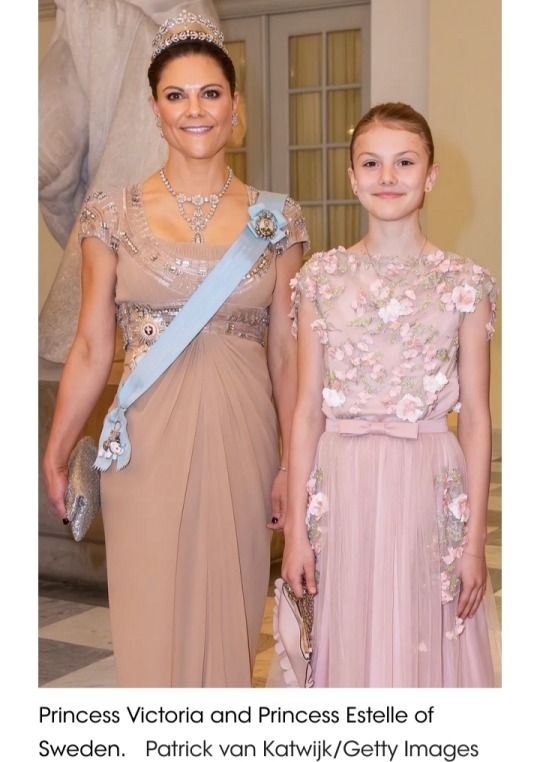
Princess Victoria of Sweden (and Princess Estelle)
The 46-year-old Princess Victoria (born 14 July 1977) is another European royal who has benefitted from the modernisation of primogeniture.
In fact, she was second-in-line to the Swedish throne at birth and leapfrogged over her younger brother, Prince Carl Philip, upon the change in the constitution.
It caused something of a controversy at the time, as her father, King Carl XVI Gustaf, objected to the change – not because he didn’t want women to succeed but because of his sympathy towards his son, who was suddenly stripped of his Crown Prince status.
In Sweden, the monarch has even less of a role in public life than in the UK, and as such, King Carl XVI Gustaf has largely kept out of the spotlight.
However, similar to other royals of her generation, Victoria has been more candid about her personal life. She was open about her struggles with anorexia in the 1990s.
Speaking about her experience in 2002, she said:
“I, Victoria, didn’t exist. It felt like everything in my life and around me was controlled by others. The one thing I could control was the food I put in me.”
She leapt to the defence of her now-husband, personal trainer Daniel Westering, when the couple’s early relationship came under close scrutiny.
Princess Victoria’s 11-year-old daughter, Princess Estelle (born 23 February 2012), is next in line to the throne after her mother.
She has similarly benefitted from the change in the law, as she has a younger brother, Prince Oscar.
Commentary in the Swedish press questioned the appropriateness of their match, something which Victoria spoke out against.
#Future European Queens#European Royalty#Princess Catharina-Amalia of the Netherlands#The Netherlands#Dutch Royal Family#Princess Elisabeth of Belgium#Princess Leonor of Spain#Spanish Royal Family#Princess Victoria of Sweden#Princess Estelle of Sweden#Swedish Royal Family#House of Bernadotte#Belgian Royal Family#House of Bourbon#House of Orange-Nassau
3 notes
·
View notes
Text
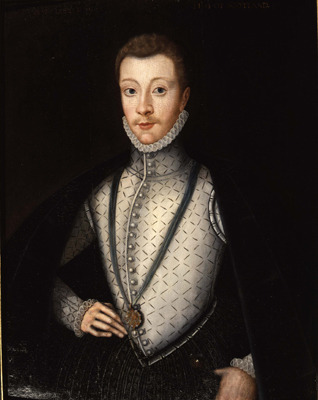
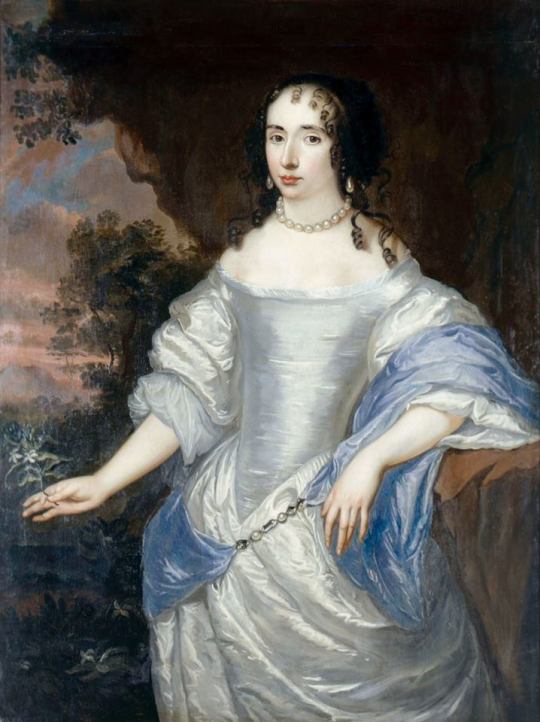
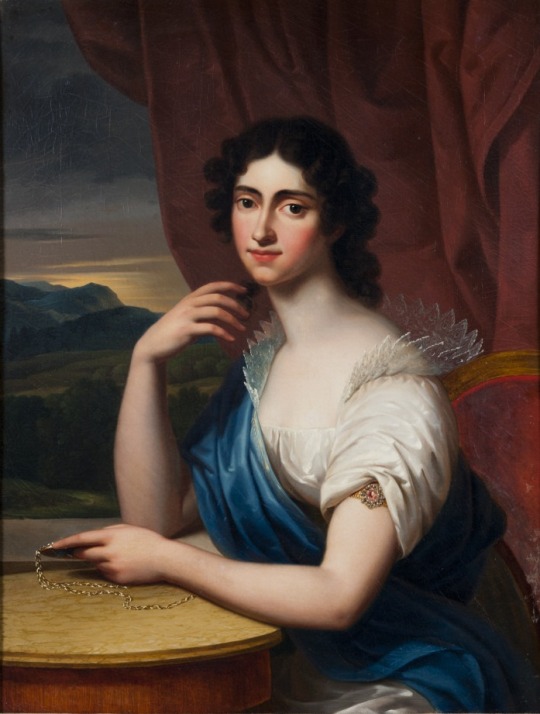
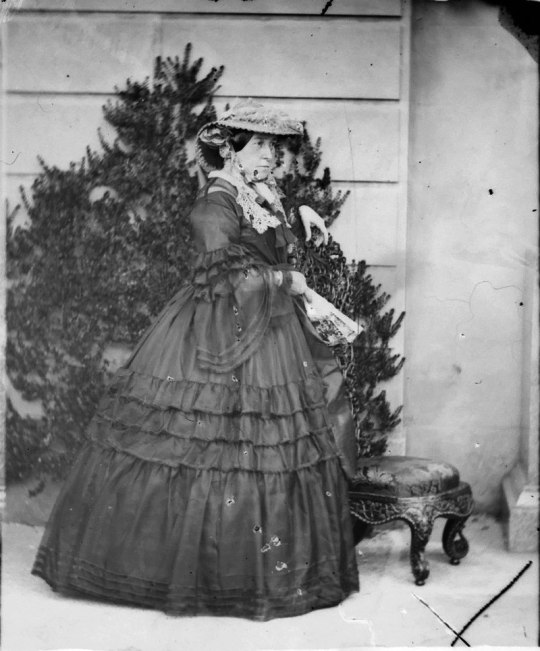

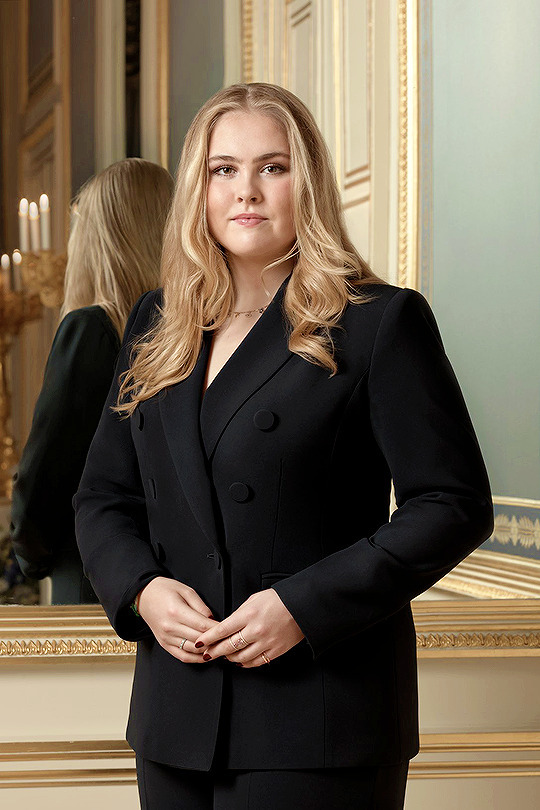
Royal birthdays for today December 7th:
Henry Stuart, King Consort of Scots, 1545
Louise Henriette of Nassau, Electress of Brandenburg, 1627
Maria Christina of Saxony, Princess of Carignano, 1770
Feodora of Leiningen, Princess of Hohenlohe-Langenburg, 1807
Bajrakitiyabha, Princess of Thailand, 1978
Catharina-Amalia, Princess of Orange, 2003
#henry stuart#Louise Henriette of Nassau#Maria Christina of Saxony#Feodora of Leiningen#princess Bajrakitiyabha#princess catharina amalia#royal birthdays#long live the queue
16 notes
·
View notes
Text



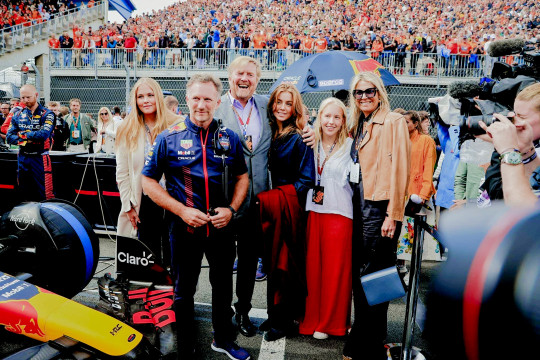

King Willem-Alexander of The Netherlands, Queen Máxima of The Netherlands, Crown Princess Catharina-Amalia of The Netherlands, Princess Alexia of The Netherlands and Countess Luana of Orange-Nassau attend the Dutch Grand Prix F1 race in Zandvoort, Netherlands -August 27th 2023.
#king willem alexander#queen maxima#crown princess catharina amalia#princess alexia#countess luana#dutch royal family#netherlands#2023#august 2023#f1 grand prix#f1 grand prix 2023#dutch gp#dutch gp 2023#royal children#my edit
9 notes
·
View notes
Text
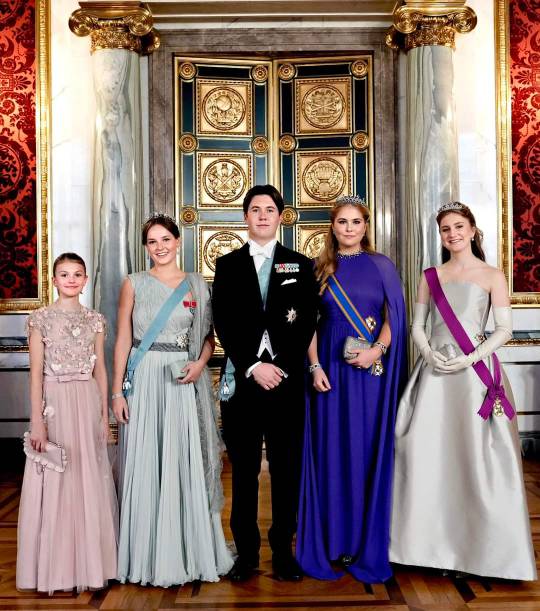
Princess Estelle Silvia Ewa Mary of Sweden, The Duchess of Östergötland
Princess Ingrid Alexandra of Norway
Prince Christian Valdemar Henri John of Denmark, The Count of Monzepat
Princess Catharina-Amalia Beatrix Carmen Victoria, The Princess of Orange, Princess of The Netherlands. Princess of Orange-Nassau
Princess Elisabeth Theresia Maria Helena of Belgium, The Duchess of Brabant
2 notes
·
View notes
Photo




THE A-TEAM
Princess Amalia
Princess Alexia
Princess Ariane
#Princess Catharina Amalia#Princess Alexia#Princess Ariane#Dutch Royal Family#Prinses Catharina Amalia#Prinses Alexia#Prinses Ariane#House Orange Nassau#[\/]#photocalls#royal sibs#The A Team#tw: photosensitivity#tw: flashing
107 notes
·
View notes
Text
Subtext and Culture, Young Royals, What's in a name?
I thought I was done, but I have material for one more post. I want to write more about how royal names work, because I've seen a lot of confusion and simple lack of knowledge in the tags, so think of this as more of an informative culture post than an analysis post of the show.
European royals and nobles have styles, names, titles, and houses. In addition, monarchs have regnal names.
A style is how you formally address someone, based on their rank and title. In Sweden, the only styles left are "majesty" and "royal higness", where kings and queens are addressed as "your majesty", and select members of the royal family are addressed as "your royal highness". In Swedish, these styles are often abbreviated as H.M. - Hans/Hennes Majestät and H.K.H. - Hans/Hennes Kungliga Höghet. In English, the abbreviations are HM and HRH.
In the show, you can see this when Simon meets the Queen, and shakily addresses her as "Your Majesty", or when Minou calls up August and says "Her Majesty the Queen has resolved your problems with the school fee".
In less formal, but still polite speech, you would use third person addressing when talking to or about the royals, and there are numerous examples of this in the show:
Anette to Erik: "How nice to see the crown prince again!"
Some aide to Wilhelm: "Could we get a shot of the prince shaking hands with the headmistress?"
Anette: "Wilhelm, sorry, the crown prince, how nice the memorial was!"
August: "The queen has asked me, personally, to take care of him."
Malin: "I just wanted to remind the crown prince that breakfast closes in five minutes."
Names for royals and nobles work just like the rest of us, but with one exception: Royals generally do not use last names, while lesser nobles do. They also tend to have several first names, and while they generally pick names for their children based on trends in society, they stay on the traditional conservative side, and they often pick names from their family history.
The show only tells us one first name for each member of the royal family: Kristina, Ludvig, Erik, and Wilhelm, so we have no idea what other names they might have.
In the real world, the name of the king of Sweden is Carl Gustaf Folke Hubertus, the crown princess' name is Victoria Ingrid Alice Désirée, and her oldest daughter's name is Estelle Silvia Ewa Mary, just to give you some flavour of what it could look like.
Titles are what sets higher nobles apart from us mere commoners, and have their origin in the feudal system of medieval Europe, which was a hierarchical socio-economic-military system where the lord of a land could grant a portion of his land, a fief, to a vassal in exchange for fealty - loyalty, taxes, and military service. Doing so would create a title, it would make the vassal a noble of a lower rank than his lord, because you could only create titles lower than the one you possessed. So, in general, kings could create dukes or lower, dukes could create counts or lower, and counts could create barons. The fief of a duke is called a duchy, a count ruled over a county, and a baron over a barony, although there were more ranks and more titles than that, depending on region and language, but those are the main ones.
Every single squabble or conflict or battle or civil war or war fought in the middle ages was over the titles, because the titles legally conferred ownership of a piece of land, and with it the rights of taxation and the economic value of that land. Over time, kingdoms got more centralized and the hierarchical nature of the system broke down, while the titles became more hereditary, and ownership of the land became less important, which meant that minor nobles lost the power to create vassals and fiefs, while the power to create titles was reserved for the monarchs, and titles created in this era usually only granted people a title for an area or a castle or a manor house that they already owned.
Going into modern times, European countries curbed title creation, but generally kept protections for existing titles and allowing them to be inherited according to whatever inheritance rules applied to each title. But if a title holder dies without a legal heir, the title is lost forever, which means that most modern day noble families want to make sure their title, their history, their legacy can survive long into the future. Also note that one person can hold several titles, and each of those titles can be inherited individually and under different rules.
In Sweden, there are currently 46 comital families (greve/grevinna - count/countess), 131 baronial families (friherre/friherrinna - baron/baroness), and 484 untitled lower noble families. There are no independent ducal families, instead the monarch grants royal children a ceremonial duchy at birth, for one of the 25 historical provinces of Sweden. This means that every single member of the Swedish royal family is a prince or princess of Sweden, and also duke or duchess of some province.
Again, we have no idea what province Wilhelm is the duke of in the show, while for example in the real Sweden, Princess Estelle is the duchess of Östergötland, Prince Carl Philip is duke of Värmland, and Princess Leonore is duchess of Gotland.
A noble house is a noble family or clan that is associated with one or more hereditary titles. Noble houses were founded when someone was ennobled and granted a title, and a noble house can branch and wither and split and form new houses over the ages, and it can gain or lose status as its members gain or lose noble titles and ranks.
In medieval times, these family bonds were very strong, and many major conflicts were a result of different houses fighting over various titles, for example the Wars of the Roses was a 32 year long civil war over the throne of England between the House of York and the House of Lancaster.
A royal house is a noble house that holds a title of king or queen, and for members of the royal family, their house name is what they have instead of a normal last name. We don't know which royal house Wilhelm belongs to in the show, but the current royal house of Sweden is the House of Bernadotte, named after the French rando we imported that I wrote about in the last post. Other houses that have been the royal house of Sweden throughout history include the House of Holstein-Gottorp, the House of Oldenburg, and the House of Vasa.
Finally, a regnal name is a name that a reigning monarch chooses for themselves when they ascend the throne, and it consists of one or more of their first names, and a roman numeral ordinal if there have been previous kings or queens with that name. If you're the first of your name to rule over a kingdom, you can choose to call yourself "the first", or you can choose not to.
In the show, Kristina doesn't appear to have an ordinal, but in real life Sweden there was a Queen Kristina who reigned in the middle of the 1600's. (She was probably a lesbian, caused the death of French philosopher René Descartes, abdicated in favour of her cousin, and moved to Rome and converted to Catholicism. As you do.)
In the real world, the king of Sweden reigns under the name Carl XVI Gustaf, because he's the sixteenth (tenth, actually) Karl to have been king of Sweden, and he also picked his second name because he liked it, or because he wanted to stand out from the fifteen other Karls who preceded him. His regnal name is pronounced Carl den sextonde Gustaf - Carl the sixteenth Gustaf.
Putting all of this together, the styles, the names, the titles, and the houses, and we can finally get the full formal names of various royals. Here are examples from some European royal families to demonstrate what it can look like:
HRH Madeleine Thérèse Amelie Josephine, Princess of Sweden, Duchess of Hälsingland and Gästrikland, of house Bernadotte.
HH Felix Henrik Valdemar Christian, Prince of Denmark, Count of Monpezat, of house Glücksburg.
HRH Ingrid Alexandra, Princess of Norway, of house Glücksburg.
HRH Prince William Arthur Philip Louis, Duke of Cambridge, of house Windsor.
HRH Catharina-Amalia Beatrix Carmen Victoria, Princess of the Netherlands, Princess of Orange, of house Orange-Nassau
HRH Emmanuel Léopold Guillaume François Marie, Prince of Belgium, of house Belgium.
HRH Infanta Sofía de Todos los Santos de Borbón y Ortiz, of house Bourbon.
These names are quite the mouthful, and the full names and styles are only used in very formal settings. Normally, these people are referred to with their highest title, and their chosen first names, i.e. Princess Madeleine, Prince Felix, Princess Ingrid Alexandra, Prince William, Princess Catharina-Amalia, Prince Emmanuel, and Infanta Sofía.
We only have the short name of Wilhelm, i.e. Prince Wilhelm, in the show. We don't have his full name, but if it follows form, he would be HRH Wilhelm <Name> <Name> <Name>, Prince of Sweden, Duke of <Province>, of house <House>.
Note that Wilhelm's father is not a king, he's a prince-consort, since Wilhelm's mother is the reigning monarch. The proper styles for his parents would be Her Majesty Queen Kristina (II?), and His Royal Highness Prince Ludvig.
The only other nobles in the show we have full names for is August and Felice, and August's full name would be August <Name?> Horn, Count (or Baron) of Årnäs. Felice's would be just Felice <Name?> Ehrencrona, because her parents are still alive and still hold whatever title they have.
Commoners marrying into a royal family is no longer forbidden or controversial, and all European royal families have had commoners marrying into them in the past few generations.
Based on precedence, if Wilhelm and Simon were to get back together and marry in the future, and if they get the consent of the Queen and the government, the following would happen:
Simon would be offered to be made a prince of Sweden, and with it gain the style of HRH.
Simon would be offered to be made a duke of some province.
If he accepts, he would lose his last name, and go from Simon Eriksson to HRH Simon, Prince of Sweden, Duke of <Province>, or simply Prince Simon.
If he declines, he would stay as Mr. Simon Eriksson.
When/If Wilhelm ascends the throne, he would chose a regnal name, and get an ordinal depending on the number of Wilhelms before him. If he's the first of his name, he would simply be King Wilhelm.
And if he and Simon are married when he ascends, Simon would not become king, he would become a prince-consort, and keep the title of prince.
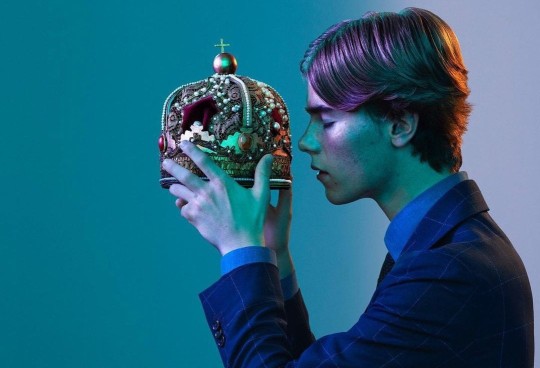
350 notes
·
View notes
Text



























The Royal Fandom Autumn 2024 Photo Challenge!
Day Twenty Three: Favourite photo(s) of royal christenings
#mine#royaltyedit#royal autumn 2024 challenge#king carl gustaf#crown princess victoria#princess estelle#carole middleton#michael middleton#kate#crown prince haakon#princess ingrid alexandra of norway#prince oscar#princess madeleine#chris o'neill#princess leonore#prince nicolas#queen maxima#king willem alexander#princess catharina amalia of orange nassau#king harald#queen mathilde#king philippe#princess elisabeth of belgium#louis#king felipe#queen letizia#princess adrienne#will#george#the queen
20 notes
·
View notes
Photo
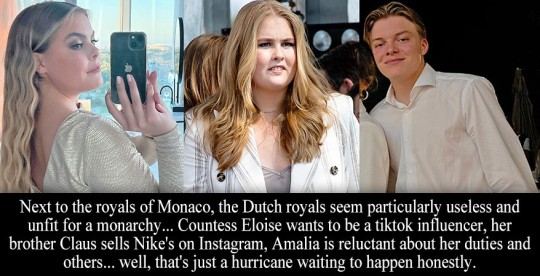
“Next to the royals of Monaco, the Dutch royals seem particularly useless and unfit for a monarchy... Countess Eloise wants to be a tiktok influencer, her brother Claus sells Nike's on Instagram, Amalia is reluctant about her duties and others... well, that's just a hurricane waiting to happen honestly” - Submitted by Anonymous
23 notes
·
View notes
Text
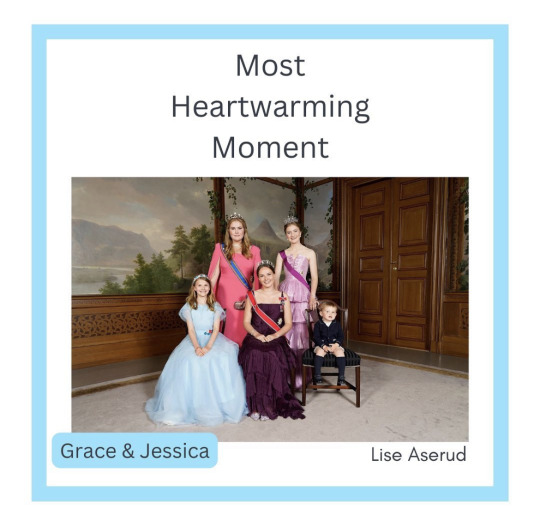
Category Number 7: Most Heartwarming Moment - Moving away from the more traditional yearbook categories, both Grace and Jessica picked the same highlight for their heartwarming moment. Princess Ingrid Alexandra’s 18th birthday party was a true high point of the year with a stand out moment being the future monarchs photo, showing Princess Elisabeth of Belgium, Princess Catharina Amalia of Orange Nassau, Princess Ingrid Alexandra of Norway (all of whom made tiara debuts), Princess Estelle of Sweden (wearing a sparkly headband), and Prince Charles of Luxembourg in a tiny suit
#Episode 46#norwegian royal family#belgian royal family#swedish royal family#dutch royal family#luxembourg royal family#princess estelle#princess ingrid alexandra#princess elisabeth#prince charles of luxembourg#prince charles#princess catharina amalia#princess amalia
7 notes
·
View notes
Text
Official portraits to symbolize the significant milestone in the Dutch Royal House. His Majesty King Willem-Alexander of The Netherlands celebrates 10 years on the Dutch throne. It's been 10 years also since Queen Beatrix, who is now known as Princess Beatrix of Orange-Nassau, abdicated the throne in favor of her eldest son. With them in the series of photo is the King's heir apparent, Catharina-Amalia, The Princess of Orange. These photos were taken at Noordeinde Palace in December 2022. ©RVD - Gemmy Woud/Dutch Royal House
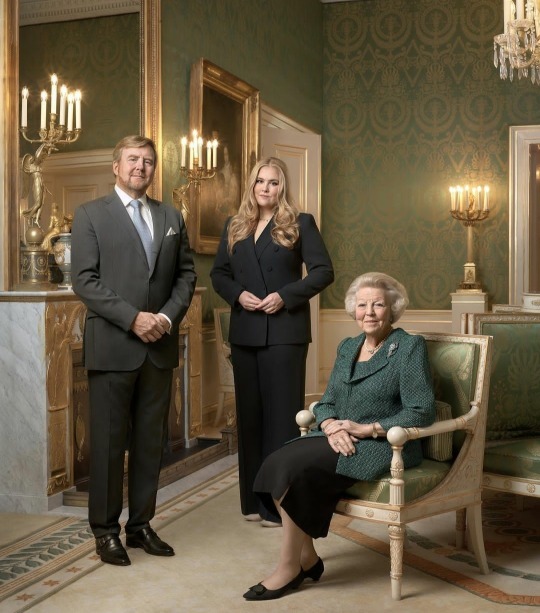



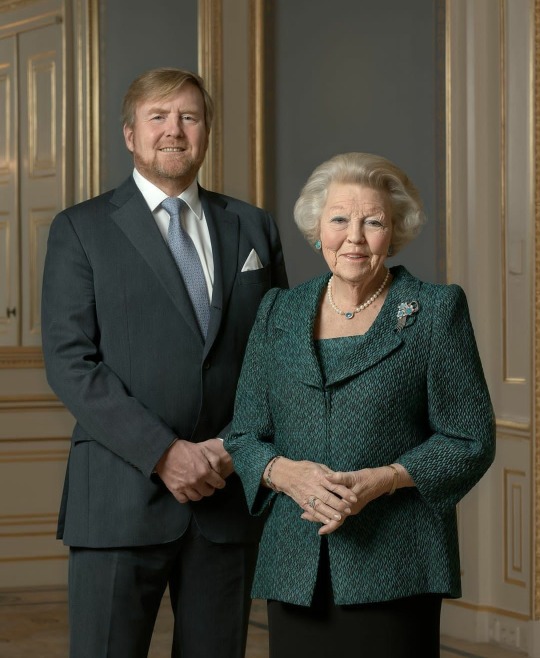
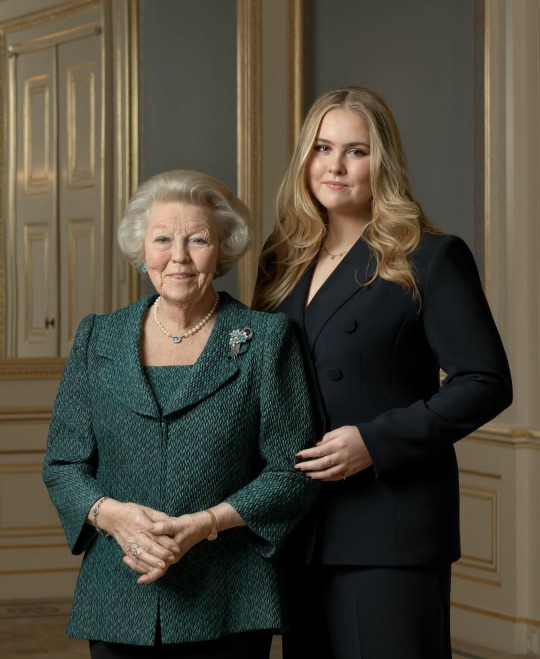
#royal world news#royalsofeurope#dutch royal family#king willem alexander#princess catharina amalia#queen beatrix
2 notes
·
View notes
Text

King Willem-Alexander of The Netherlands, Queen Máxima of The Netherlands, Crown Princess Catharina-Amalia of The Netherlands, Princess Alexia of The Netherlands and Countess Luana of Orange-Nassau attend the Dutch Grand Prix F1 race in Zandvoort, Netherlands -August 27th 2023.
#king willem alexander#queen maxima#crown princess catharina amalia#princess alexia#countess luana#dutch royal family#netherlands#2023#august 2023#f1 grand prix#f1 grand prix 2023#dutch gp 2023#dutch gp#royal children#my edit
9 notes
·
View notes
Text
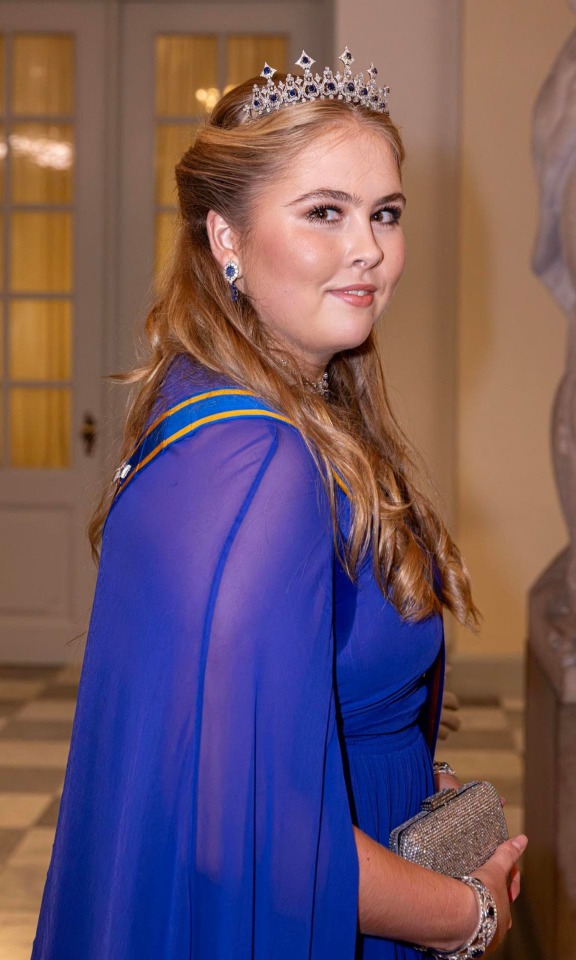
The Heir Club
Princess Catharina-Amalia Beatrix Carmen Victoria of The Netherlands, Princess of Orange-Nassau, The Princess of Orange, 19
8/?
0 notes
Photo
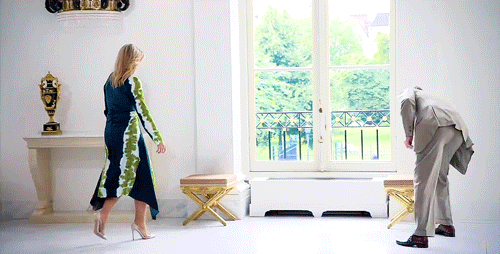
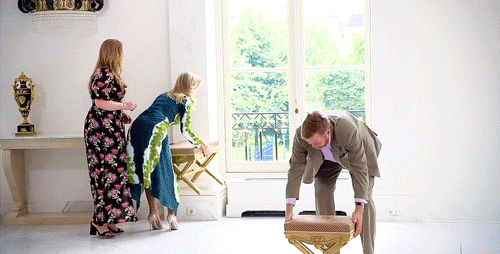
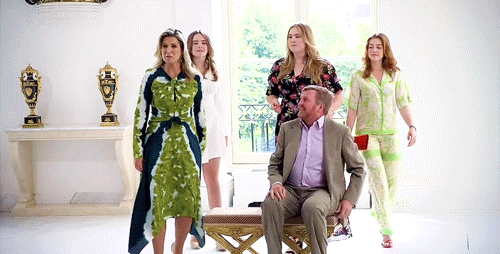
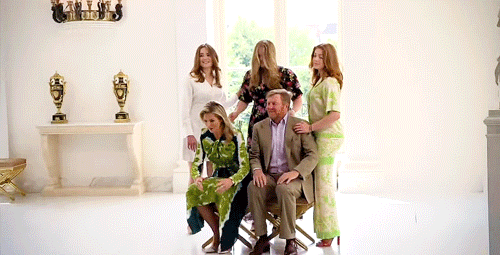
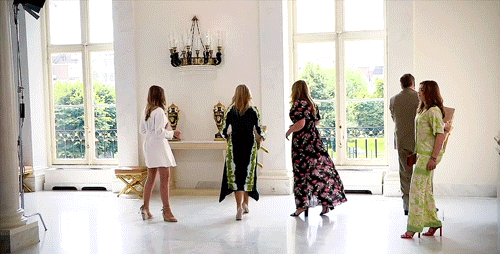
Monarch and Consort, and photocall production assistants
It’s a lovely photo
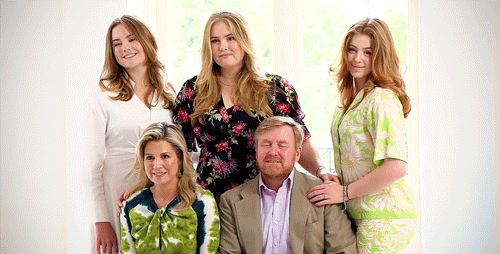
#King Willem Alexander#Queen Maxima#Princess Catharina Amalia#Princess Alexia#Princess Ariane#Dutch Royal Family#Koning Willem Alexander#Koningin Maxima#Prinses Catharina Amalia#Prinses Alexia#Prinses Ariane#House Orange Nassau#[\/]#photocalls#who else is bothered that WA didn't put the seat back in the right spot?#👋🏽#love the girls just standing/hovering around while mum and dad do the work#'it's fine kids. we've got it"#(tbf Ariane started to pick a seat up but they ultimately decided on just the two)#tw: photosensitivity#tw: flashing
54 notes
·
View notes